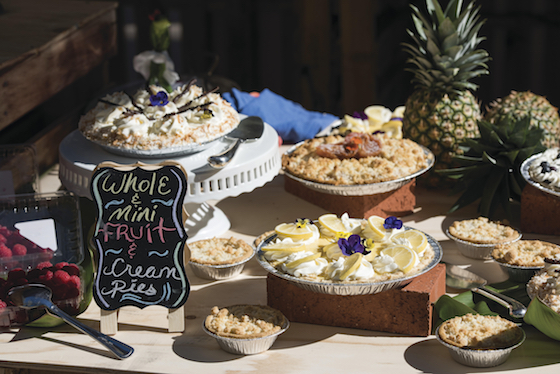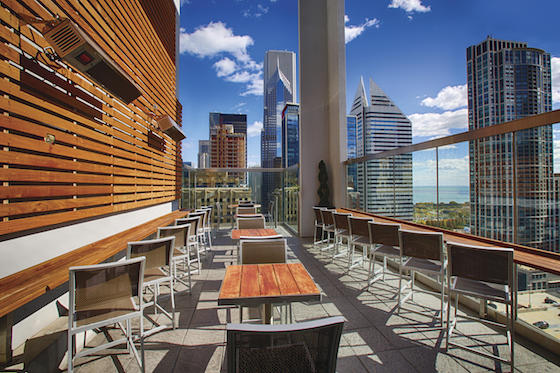Meetings and conferences are big business for many hotels. But groups can be fickle, opting for an offsite venue that promises a change of scenery. Clever hotel F&B directors and event managers keep group capture rates high by optimizing their venue options, embracing casual and authentic experiences and stirring up culinary creativity.
Perhaps the biggest appeal in going offsite is variety. “Meeting planners today are always looking for a new experience for attendees or internal clients,” says Chris Kandziora, vice president of Ojai Valley Inn and Spa in Ojai, Calif. “They want natural light, unique spaces, natural environments, not the traditional box ceilings and a couple of chandeliers.”

Contributed by Megan Rowe
“Unique” comes in many guises. For Ojai Valley Inn, it’s a farmhouse-themed, 20,000-square foot culinary and event center with multiple function spaces, a huge demo kitchen and sliding doors that open to an expansive lawn — all tied to an agricultural theme that reflects the area’s heritage and matches consumers’ continued obsession with food.
When it opens in December, the farmhouse will host meetings and events with a team of chefs as rock stars. Not every hotel can build new spaces, but outside-the-box thinking can reveal otherwise ignored opportunities that could work, depending on the group.
“We look for any and all areas that could be transformed into an event space,” says Matt Stuhl, vice president of restaurants, bars and events at Two Roads Hospitality.
At San Francisco’s Hotel Vitale, some sleeping rooms were outfitted with murphy beds and easily moved furniture and converted to cocktail reception spaces, while the rooftop was reinforced to allow groups outdoor access to the property’s bay views.The Wit, a Chicago hotel, wows groups by taking them up to the 27th floor for breakfast or lunch at Roof, an indoor-outdoor restaurant and bar with stunning city views.

Informality rules
Balancing casual and special can be approached a variety of ways. Hands-on experiences resonate: The Sawgrass Marriott Golf Resort & Spa in Ponte Vedra Beach, Florida, recently hosted a group that wanted a different type of bar experience, so the team set up a frontless bar that got attendees involved in the anatomy of a cocktail, from ingredient to finished product.
Hotels that keep up with restaurant menu trends are better positioned to compete with outside venues as well. Stressing local and seasonal sourcing, having delicious gluten-free and plant-based options and getting creative with cocktails are all ways to get buy-in from even the most jaded meeting planner.
Even a high-volume hotel like Wynn Las Vegas is on the “buy local” bandwagon, seeking out reliable sources for fruits and vegetables that can supply events that could run up to 7,000 attendees. “A lot of our clients are asking for sustainable menus and a farm-to-table experience — we create about eight to 10 custom menus a month and have those discussions regularly,” says Kelly Bianchi, the resort’s executive chef of catering and events.
Hyperlocal menus are even more compelling. Whisper Creek Farm, an event space on the grounds of the JW Marriott Grande Lakes in Orlando, Florida, serves menus using home-grown products, and guests are encouraged to check out the garden and sample some of the crops. The farm also supplies eggs from ducks, chickens and quail, and honey from the onsite apiary.Menu innovation matters to groups, too.
Two Roads now offers a low-glycemic option for individual meals or across an entire program. Sometimes planners will go low-glycemic during the day but order a more indulgent dinner. “We have had a lot of interest in this, and a lot of traction with return groups,” Stuhl says. “People see the result of having these menus in place and what they do for motivation and level of energy.”
In the end, keeping groups from going elsewhere is about ensuring a consistently great experience that keeps attendees interested. “Attendees really want to hang together,” says Larry Eels, executive chef at the Hyatt Regency Indian Wells Resort & Spa in Indian Wells, California. “That’s your trump card.” Great food, interesting beverages and the right setting will keep them interested.
